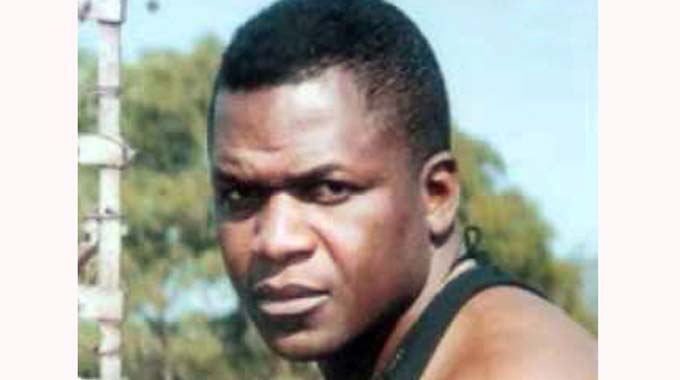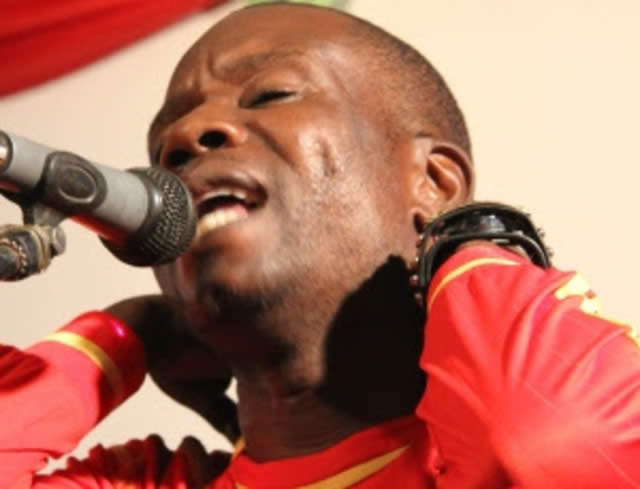Malunga tells story behind ‘Nesango’ video

Godwin Muzari Arts Editor
Clive Malunga is known for various expeditions, including controversial ones, but his most outstanding claim to fame is the video to his song “Nesango”. The video is still regarded as one of the best visual productions from yesteryear musicians. It came with a unique flair. It is like an excerpt from a war movie. It exudes creativity and it automatically became the video of the year on ZTV in 1997.
Unlike some choices of videos of the year that have sparked debate and outrage, “Nesango” was an undisputable winner. It would have caused a stir for not winning. It was a deserved honour for a well done project.
Just a recap of the video: “Nesango” is a song about the liberation war and it chronicles how fighters toiled in the bush during the struggle.
The video depicts some war scenes, with helicopters descending on guerillas, horses chasing suspected guerillas, military vehicles on patrol and pungwe meetings with villagers.
Even now, “Nesango” remains one of videos that went miles in trying to portray the war situation. It is like a short film and that creativity made it appeal to people across political and social divides. It made Malunga one of the best musicians of his time.
With limited technology of the ‘90s, Malunga wrote a colourful piece of history. When people watch the video, many still wonder how he managed to come up with the production.
In an interview this week, Malunga revisited the making of “Nesango” video and nostalgically shared his experience about the production.
It took him about six months to put the video together. He had to make applications to use army vehicles, helicopter, uniforms, ammunition and staff.
It was not an easy process.
“I actually wanted to make a war film but resources did not permit, so I settled for a song. I wanted the video to depict as much information as possible about the liberation struggle. Doing so within a few minutes of the video was not easy, but we had no option. We needed the best footage and we had to do so with limited resources,” Malunga recalled.
“I made appointments with top military personnel, but it was not easy to get to meet them. I was patient because I knew that without their involvement the video would not come out as I anticipated.”
Malunga had to hold on to his script for some months, pursuing his aim to get the army’s hand in the video.
His dream began to materialise when he finally had a meeting with then defence forces commander General Vitalis Zvinavashe.
“We met and I told him about my intention. It was not easy to convince him because getting permission to use military facilities has many security implications.
“It was even more dangerous to national security at that time because that was the time when jailbirds Chidhumo and Mase-ndeke were on the run and were reportedly causing terror among civilians. It was not easy to get the clearance for army facilities,” recalled Malunga.
After serious deliberations, that included being referred to other commanders of military wings, Malunga finally got a green light for his production.
“I got most of the things I had asked for. That is when I realised how professional pilots are. They do not miss time. Our shooting site was in Chishawasha. I had located a good space there. The pilot of the helicopter said he would be at the site by 1pm.
“We went there with the team and ZTV producer Remmington Mbeya. By exactly 1pm the helicopter was hovering above us and we were too excited to believe it. Even Mbeya was surprised.
“It was an adrenalin moment. That scene inspired Mbeya to do a lot of things he had not done before. He said he had never done such a video and everyone in his team was excited. Everyone in our team put maximum effort. We were enjoying ourselves on set.”
Malunga said they were only allowed two hours for shots involving the helicopter and Mbeya had to make the best with limited technology that they had those days.
After the helicopter scenes, they were given army vehicles on a separate day to add more scenes to the video.
“For about three weeks, we were dealing with the army to ensure that we get the best shots. That is when the famous shot that shows the underneath of military vehicles was made.
“Mbeya had to dig a hole on the road to plant a camera. He said he had never done it before and he told drivers to be very careful because any mishap would get him into trouble with his bosses for trying ‘funny’ things with their cameras.
“We also did not have the privilege of drones that many filmmakers now have. Some shots were taken when the cameraperson was up a tree just to get the best. That is how dedicated the team was.”
Malunga then approached his white friend who owned horses in Greendale. The scenes with horses were done near Cleveland Dam in Msasa.
“We were supposed to use black horses, but only a white horse had been trained for scenes that we wanted. During the war they did not use white horses because they could be detected from a distance. On the video we went a bit astray for using the white horse, but many people did not recognise the technicality.”
For village scenes, Malunga engaged villagers from Chishawasha. He says the video was a compression of serious footage and many other exciting scenes had to be chucked out because of space.
It was because of outstanding effort that Malunga managed to come up with the timeless video.
“Nesango” remains one of the best local videos and young musicians can learn a lot from it.
His follow-up video “Zunde Ramambo” was also exceptional, but it failed to beat the record set by “Nesango”.
Malunga currently runs Jenaguru Centre in the capital. It grooms talent and facilitates exchange programmes with Japanese centres. He continues to make music, although he is no longer actively involved in local live performances.
“Nesango” remains one of the best local videos and young musicians can learn a lot from it.







Comments